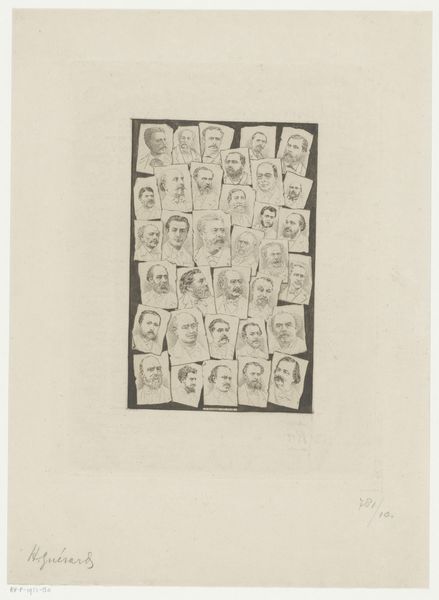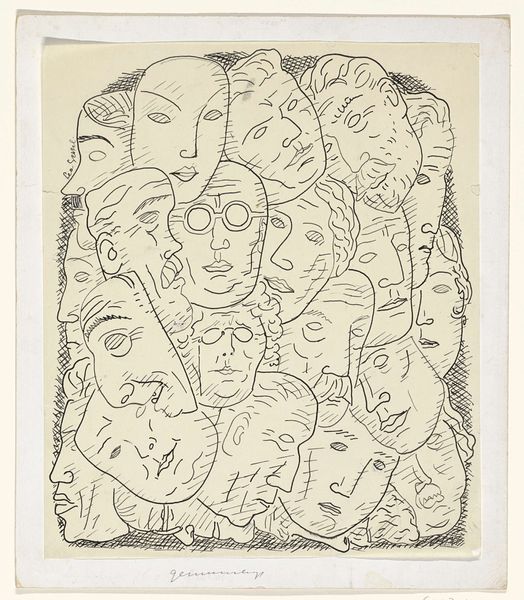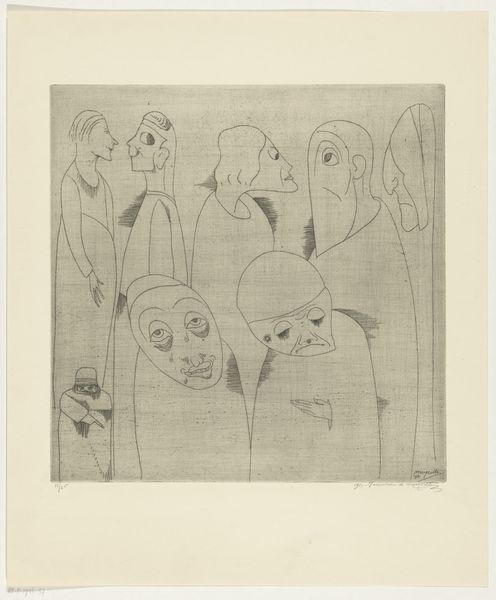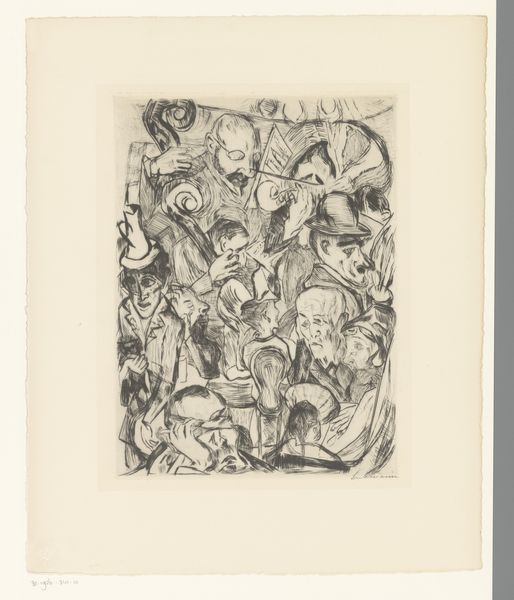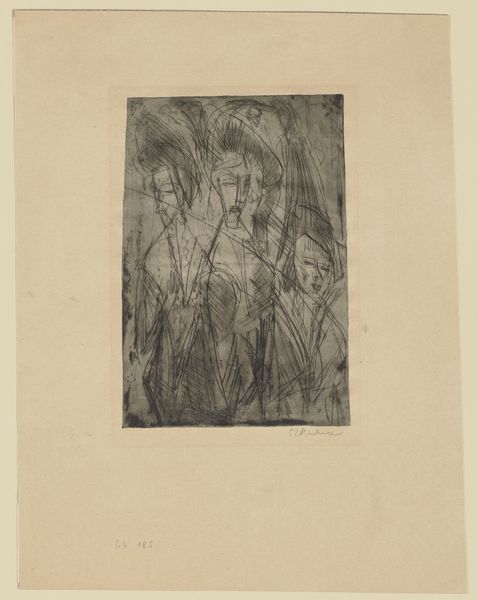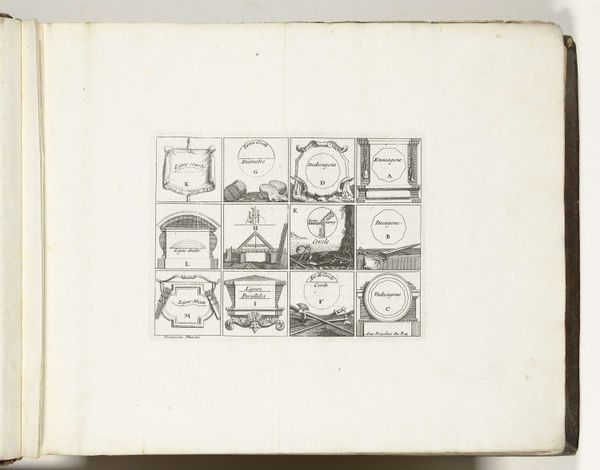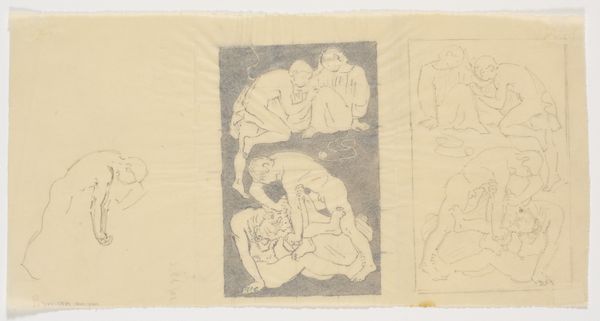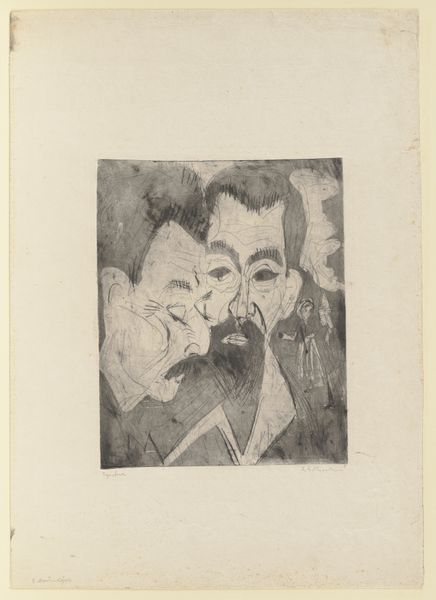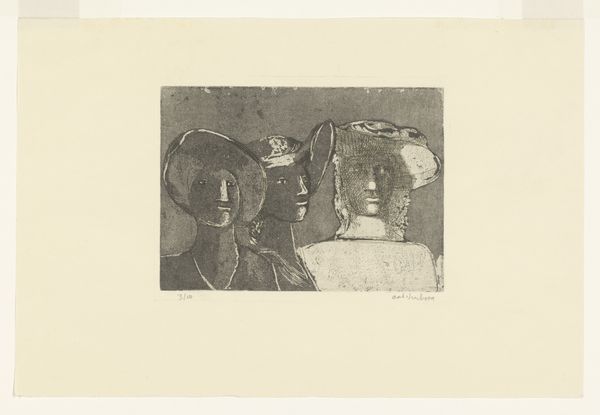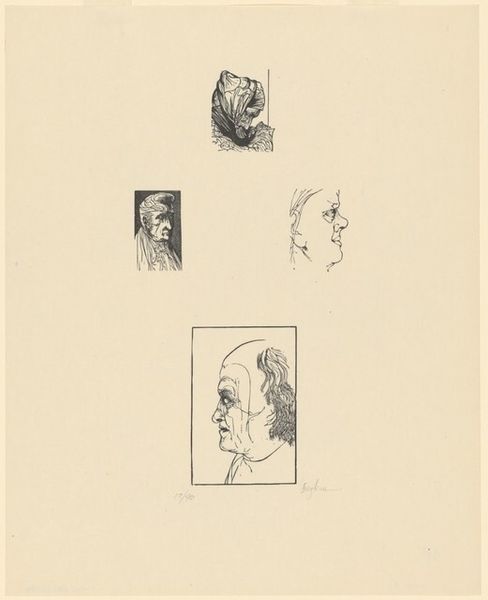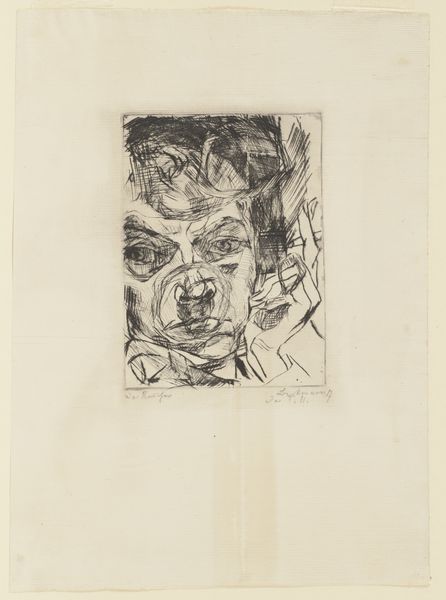
drawing, paper, ink
#
portrait
#
drawing
#
caricature
#
caricature
#
paper
#
ink
Dimensions: height 250 mm, width 198 mm, height 393 mm, width 309 mm
Copyright: Rijks Museum: Open Domain
Curator: Welcome. Before us is "West-Afrikaanse koppen," or "West African Heads," a 1932 ink drawing on paper by Reijer Stolk, held here at the Rijksmuseum. Editor: My first impression is one of almost scientific observation, but undercut with a certain unease. There's a clinical quality to the presentation of these faces. Curator: Absolutely. Stolk was fascinated by the human form, and his artistic process frequently involved a representational method to create almost ethnographic portrayals. This artwork presents a series of faces, each labeled with locations like 'Nigeria' and 'Gold Coast,' now Ghana, inviting us to consider their cultural and geographical origins. Editor: These almost cartoonish depictions are interesting because there is no expression shown. Stolk captures their ethnic looks and distinctive regional traits without conveying the men's identities or characters. One can wonder if it captures, therefore, more the European view. Curator: It certainly treads a dangerous line. On the one hand, we could view it as an attempt to document and appreciate the diversity of African physiognomy. But given the historical context of colonialism and the pseudo-science of racial categorization that was prominent at the time, the work is obviously fraught with potential for reinforcing stereotypes. Stolk was particularly involved with art from the colonies, a politically problematic inclination. Editor: That's precisely what gives me pause. While Stolk perhaps sought to understand or appreciate these different groups, the act of reducing individuals to mere 'types' feels deeply problematic when looked through the prism of contemporary discourse on race and representation. He highlights some traits in his representation, thus focusing the audience's sight onto preconceived notions of those traits. Curator: Indeed. It compels us to confront the legacy of colonialism and how artistic representations can perpetuate power imbalances and racist assumptions, and it serves as a reminder of the vital importance of contextualizing artworks within their historical and socio-political frameworks. Editor: The stark, unflinching imagery invites scrutiny—not only of the artist and his intentions, but of ourselves as viewers and our own biases. Curator: Exactly, by unveiling uncomfortable layers beneath the surface, artworks such as these force essential dialogues about power, identity, and the lingering echoes of colonialism.
Comments
No comments
Be the first to comment and join the conversation on the ultimate creative platform.
